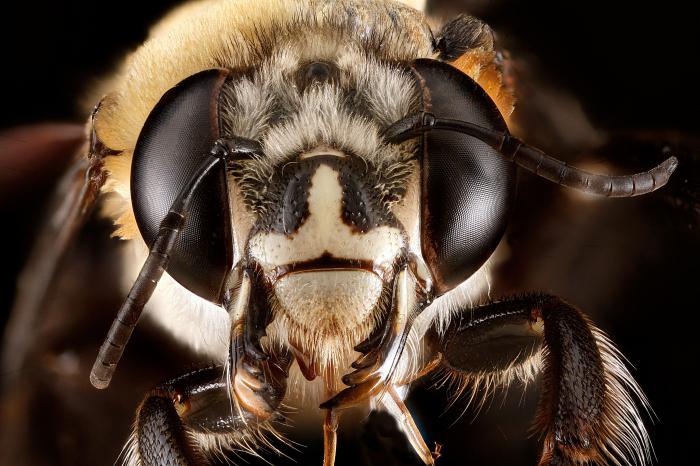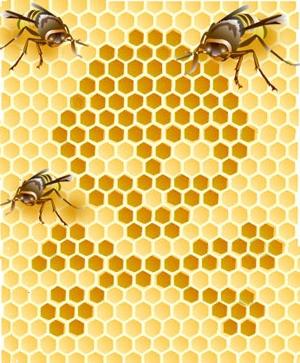How many eyes do bees have? Facet and photographic vision
People have long ago "tamed" bees that were formerlywild, and successfully use them today to get honey, basically. As a by-product - propolis, pollen, wax, bee venom. And the benefit of these industrious insects for pollination of many plants can not be overestimated! In apiaries and cottages quite often you can see unpretentious beehives, where bees live, carefully bringing people the products of their life. Today we will talk about the structure of these insects, about their senses. How they see and how many eyes are in the bees, find out from our article.

Sense organs
Bees are guided in the surrounding world with the help of the senses. These include: sight, hearing, smell, taste and others.
Smell and touch. They help the bee to maintain spatial orientation in a dark nest or hive. Organs of smell are located on the insect mustache. Some hairs covering the body of a bee are organs of touch and are connected with the nervous system. It is interesting that the drones of the pores responsible for the sense of smell are several times larger than those of ordinary bees.
Organs of taste are located in the throat of the bee, and on its proboscis, on the paws and antennae.
And these insects hear sounds with the help of organs located on the legs and other parts of the body.
By the way, bees have other organs that meetfor a more complete perception of the world around us. They analyze the humidity of the atmosphere, the temperature difference, the amount of carbon dioxide in the air. These organs allow bees to exercise control over the microclimate of the dwelling for optimum development in honeycomb larvae of insects.

How many eyes do bees have?
A separate issue is the visual organs. If you look at the bearer from afar, then to the question: "How many eyes does a bee have?" Most likely you will answer: "Two." And you'll be mistaken. Because in fact there are as many as five of them! To confuse visually knock down two huge complex eyes, located on the sides of the head and looking like two ovals. There are three more simple eyes located on the insect's head, but they are noticeable upon closer examination. Let us dwell in detail on the question of how many eyes the bees have.
Simple
Three simple, located on the crown,provide photographic vision and resemble a camera. In them, as on a photographic plate, visible objects are reproduced (they affect the branched ends). All three images in the simple eyes of the bee are combined into one by imposing.
Complex
How many eyes does a bee have? The photo only in rare cases allows you to give the correct answer to this question. The insect's complex eyes are made in a very different way. If you look at the structure of the eye of a bee under a microscope, you can see the structure of the organ. The entire surface is reticulated. It is made up of thousands of facets (microscores in the form of a hexagon). Facets, by the way, are reminiscent of honeycomb honeycombs. From the facets to the nerve endings, light-tight tubes pass through which the visual signal is received. Thus, this organ in an insect consists of intergrown cells in large numbers. The worker bee has up to five thousand of them, the drone has much more - up to eight. The uterus has five thousand small eyes in each complex eye. This type of vision is called a facet and is found in many insects (for example, in flies).
The mechanism of vision
Each of the facet cells is responsible only forpart of the image. Such individual parts of the visible object can be thousands, and all of them form in the brain of the bee into a single whole. As a variant of the name of such a view - a mosaic.

If in complex organs of vision the pictureconsists of many images, then with simple eyes insects look at objects near. It is interesting that if you exclude the possibility of faceted vision, the bees behave, as if blind or poorly seeing, and can view objects only by approaching them close enough. With complex eyes, the bee is able to survey large areas, which allows it to navigate during flights.







